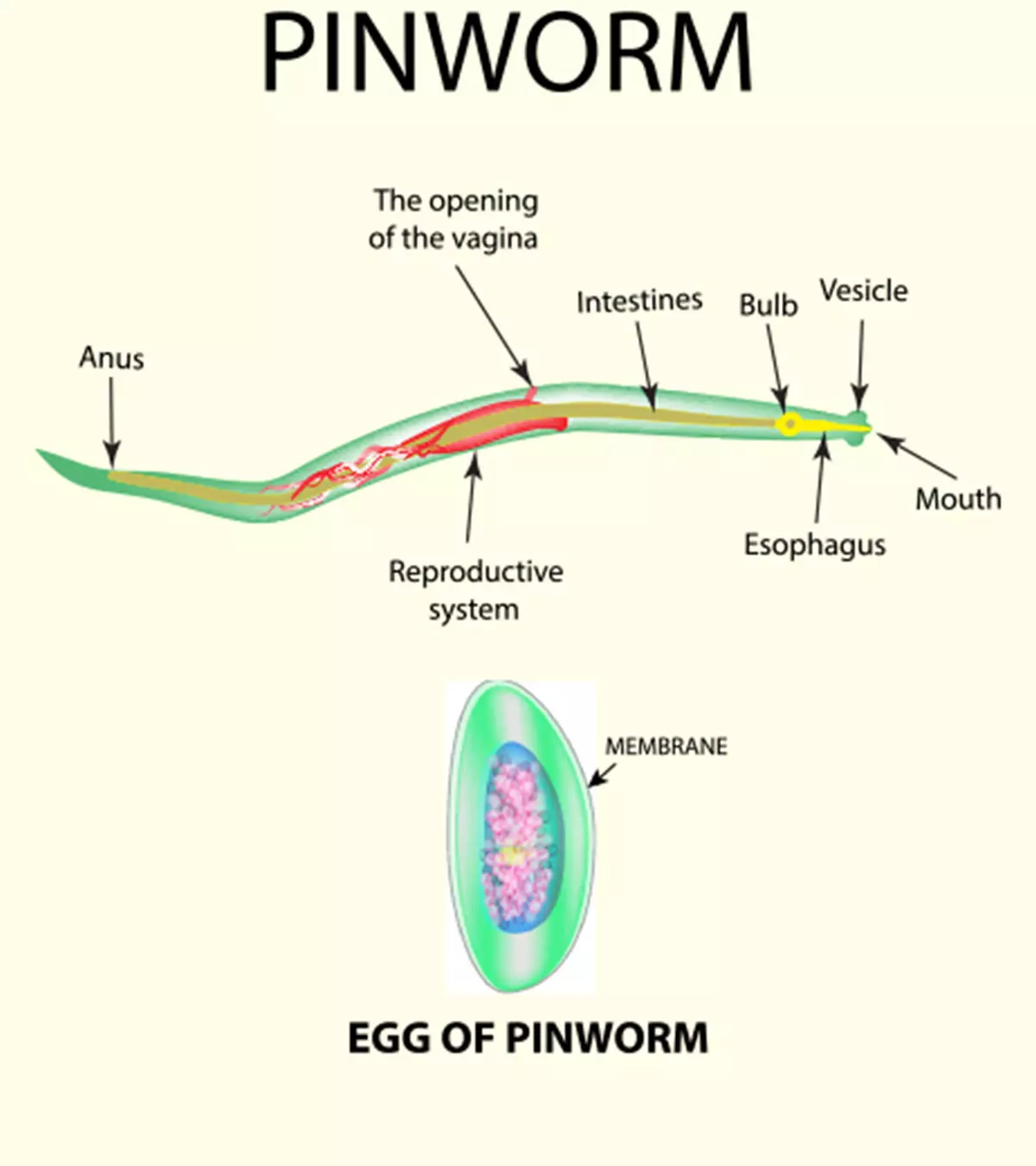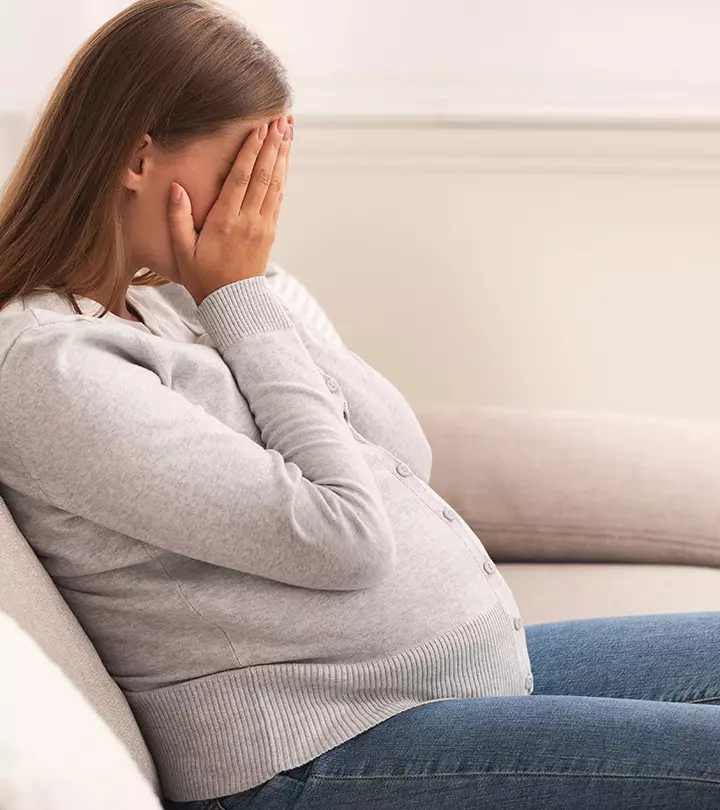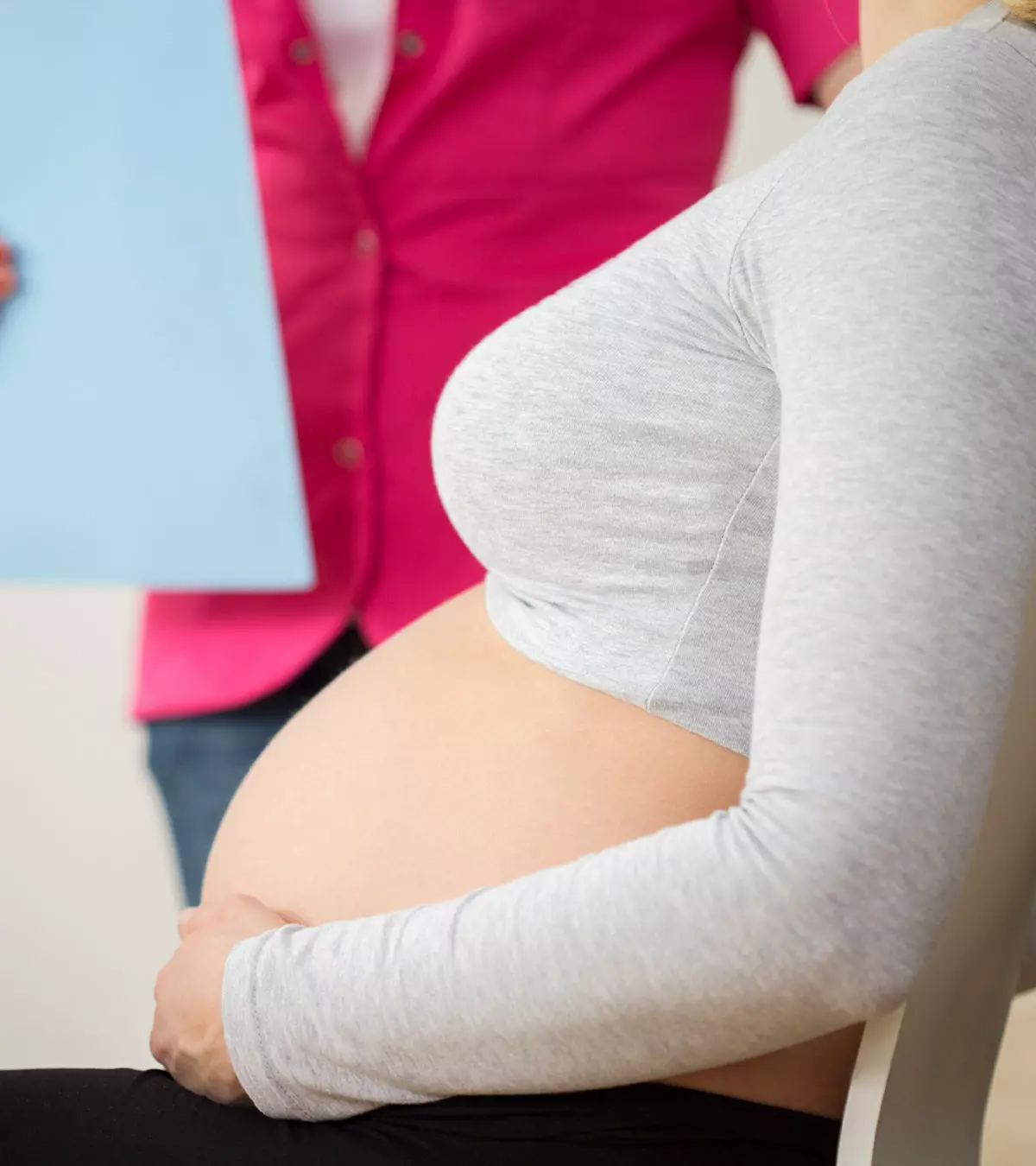
Image: Shutterstock
The luteal phaseiThe second phase of the menstrual cycle, characterized by the development of corpus luteum, that starts with ovulation and ends with menstruation of the menstrual cycle witnesses significant temperature fluctuations (1), one of which is the implantation dip. A slight decrease in basal body temperature will likely occur about one week after ovulation. While the existence of implantation dip may not be well understood, some believe it may be a sign of early pregnancy. However, different physiological factors may also influence this temperature change. This post discusses the topic in detail, including the causes and symptoms of implantation dip, to give you a better understanding of the phenomenon.

Key Pointers
- An implantation dip is a drop in the basal body temperature by a few tenths of a degree and lasts for one day.
- It may or may not be accompanied by symptoms such as abdominal cramps, light spotting, and breast tenderness.
- A second rise in the estrogen level post ovulation may cause the drop to occur.
- An implantation dip may not always confirm a pregnancy, as the temperature fluctuation may be influenced by factors such as stress, illness, and medications.
What Is Implantation Dip?
You should know about basal body temperature (BBT) to understand implantation dip since the two are related. The basal body temperature is the natural resting temperature of the body, which is about 97 to 98°F for most people. But right after the onset of ovulation, during the luteal phase, this rises by 0.5 to 1°F due to the release of the progesteroneiA reproductive hormone secreted by the corpus luteum and placenta (during pregnancy) to prepare the uterus for pregnancy hormone by the corpus luteumiThe temporary endocrine gland formed within the ovary after the release of the matured egg during ovulation . Women sometimes use BBT charting to track their ovulation and plan the right time to achieve a pregnancy. By plotting their daily temperature, they may know the time of ovulation when the graph shows an increase (2).
This increase in the temperature is interrupted by a dip of a few tenths of a degree for one day. This is called the implantation dip. The occurrence of the implantation dip takes place within the implantation window, which typically spans from about seven to ten days after ovulation. The implantation window is the timeframe during which the uterus is capable of accepting the blastocyst or embryo for implantation.
 Quick tip
Quick tipWhat Are Symptoms Of Implantation Dip?

Although the occurrence is not well-understood, it is believed that implantation dip may or may not be accompanied by a few of the common implantation symptoms. Some of the common implantation symptoms are (3):
- Light spotting or implantation bleeding
- Faint abdominal cramps or implantation cramps
- Tiredness
- Breast tenderness
- Bloating
An anonymous blogger, who goes by the name ‘Momma Brain,’ shares the symptoms she experienced 8DPO while observing a decline in her chart. She says, “My bbs (breasts) were extremely sore and tender, and I was exhausted. Other than a little cramping and a bloated feeling, I was feeling pretty good (i).”
These symptoms may vary from person to person, and not everyone may experience them. If you are unsure about your symptoms or suspect you might be experiencing any subtle signs that you are pregnant, consult a healthcare professional for guidance and support. You may also start journaling your symptoms daily, including the signs, symptoms, timing, and intensity of implantation symptoms.
What Causes An Implantation Dip?
Anecdotal evidence suggests that implantation dip may be caused by the hormone estrogeniThe hormone that helps in the development of the female reproductive system and secondary sex characteristics . The female sex hormone estrogen rises twice during the menstrual cycle. The first surge occurs before the ovulation in the middle of the follicular phaseiThe first phase of the menstrual cycle characterized by the growth and maturation of the dominant follicle containing the egg , followed by a drop after ovulation. The second surge occurs in the mid-luteal phase (4). Since estrogen decreases the body temperature while progesterone increases it (5), the second surge of estrogen may cause the implantation dip after ovulation. Additionally, stress, dietary change, lack of sleep, and illness may also cause changes in basal body temperature, resulting in implantation dip.
What Happens After The Implantation Dip?
The one-day implantation dip may be followed by the resumption of the rise in the basal body temperature until it reaches a stationary phase of the increased temperature that is maintained throughout the pregnancy.
You can take a pregnancy test to confirm the possibility of pregnancy implantation if you miss your period.
 Quick fact
Quick factDoes Implantation Dip Indicate Pregnancy?

Despite its name, implantation dip may or may not indicate pregnancy. Besides the luteal phase dip, the basal body temperature witnesses another drop one day before ovulation during the follicular phase (7). This temperature dip is typically considered one of the ovulation symptoms rather than a sign of implantation. Moreover, basal body temperature fluctuations may also be influenced by factors such as (6):
- Stress
- Alcohol consumption
- Interrupted sleep or oversleeping
- Illness such as a fever
- Medications
- Traveling
- Gynecological disorders
Thus, a drop in the temperature may not be taken as a confirmation of pregnancy. A pregnancy test and medical examination might help you get better results.
Frequently Asked Questions
1. Does an implantation dip happen in all pregnancies?
Women may become pregnant without experiencing a significant temperature drop. Thus if you don’t witness a dip in your BBT chart, it may not mean that you are not pregnant. So, it is recommended to check with a doctor.
2. Can an implantation dip last two days?
An implantation dip is typically known to last for one day. If you experience a temperature drop of two days, you will likely have passed the fertility window and are nearing your menstruation days. However, you may consult your doctor in case of any doubts.
3. How long after implantation dip does hCG rise?
Human chorionic gonadotropin (hCG) may be detected in the blood eight to ten days after fertilization or conception (8). A medical test may help confirm the result.
A slight dip in the basal body temperature is believed to occur upon implantation. Signs of implantation dip may include cramping, light spotting or bleeding, and other common implantation symptoms. However, it is important to note that an implantation dip is not always present and may not be a reliable indicator of pregnancy. Other symptoms, such as missed periods and standard detection methods, including positive pregnancy tests, are more reliable indicators. So, consult your healthcare provider if you suspect a pregnancy.
Infographic: What You Should Know About Implantation Dip
Implantation dip refers to a change in the basal body temperature (BBT) that occurs around the time of implantation of a fertilized egg in the uterus. Although sometimes used as a positive indication of pregnancy, it may not be a definitive sign for all. This infographic highlights the essential details you need to know about the occurrence.
Some thing wrong with infographic shortcode. please verify shortcode syntax
Illustration: Implantation Dip: What Is It And When Does it Occur?

Image: Dalle E/MomJunction Design Team
Personal Experience: Source
MomJunction articles include first-hand experiences to provide you with better insights through real-life narratives. Here are the sources of personal accounts referenced in this article.
i. 8DPO, implantation dip?https://mommabrain.blogspot.com/2009/08/8dpo-implantation-dip.html
References
- Mayumi Matsuda-Nakamura et al.; (2015); Effect of menstrual cycle on thermal perception and autonomic thermoregulatory responses during mild cold exposure.
https://jps.biomedcentral.com/articles/10.1007/s12576-015-0371-x - Kaitlyn Steward and Avais Raja; (2025); Physiology Ovulation And Basal Body Temperature.
https://www.ncbi.nlm.nih.gov/books/NBK546686/ - Implantation Bleeding.
https://my.clevelandclinic.org/health/symptoms/24536-implantation-bleeding - Beverly G Reed and Bruce R Carr; (2018); The Normal Menstrual Cycle and the Control of Ovulation.
https://www.ncbi.nlm.nih.gov/books/NBK279054/#:~:text=Estrogen%20levels%20rise%20and%20fallend%20of%20the%20menstrual%20cycle. - Nina S. Stachenfeld et al.; (2000); Estrogen modifies the temperature effects of progesterone.
https://journals.physiology.org/doi/full/10.1152/jappl.2000.88.5.1643#:~:text=Taken%20together%2C%20the%20available%20evidenceregulated%20body%20temperature%20in%20women. - Mary Lee Barron and Richard Fehring; (2005); Basal Body Temperature Assessment: Is It Useful to Couples Seeking Pregnancy?
https://epublications.marquette.edu/cgi/viewcontent.cgi?referer=&httpsredir=1&article=1005&context=nursing_fac - Hsiu-Wei Su et al.; (2017); Detection of ovulation a review of currently available methods.
https://aiche.onlinelibrary.wiley.com/doi/10.1002/btm2.10058 - Eugene D. Albrecht and Gerald J. Pepe; (2018); Female Reproduction.
https://www.sciencedirect.com/topics/biochemistry-genetics-and-molecular-biology/human-chorionic-gonadotropin
Community Experiences
Join the conversation and become a part of our nurturing community! Share your stories, experiences, and insights to connect with fellow parents.
Read full bio of Dr. Ben Abbes Taarji Hicham
Read full bio of Aneesha Amonz
Read full bio of Rebecca Malachi
Read full bio of Reshmi Das


















